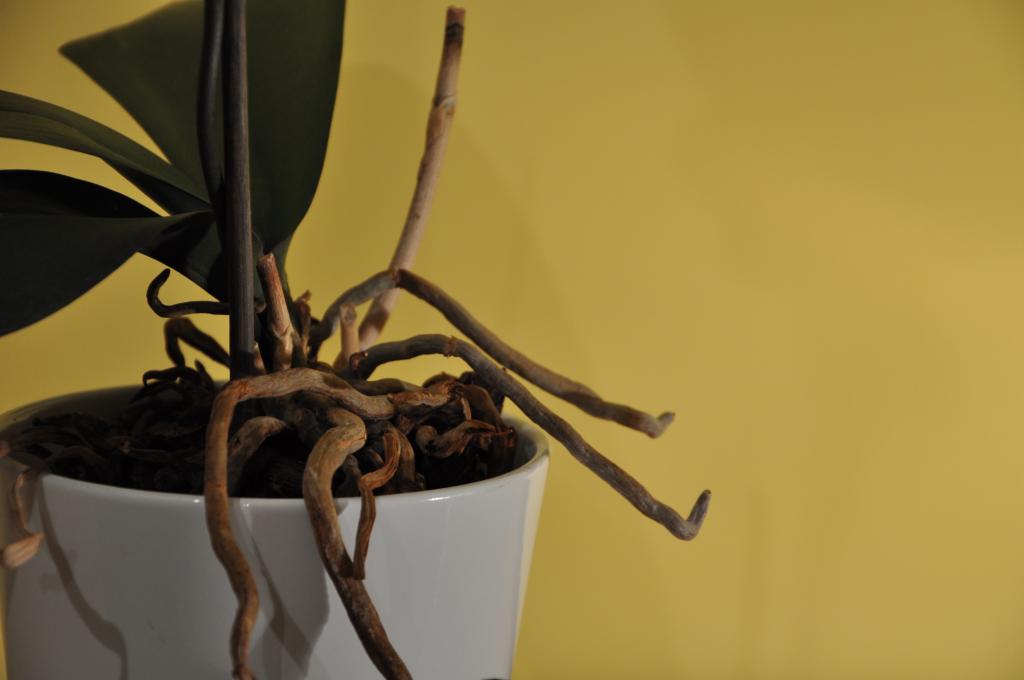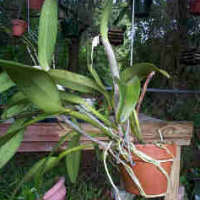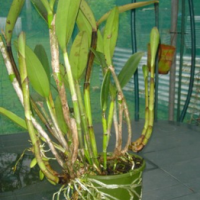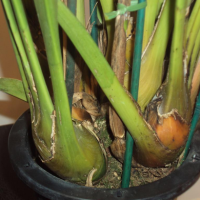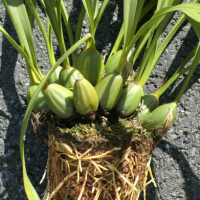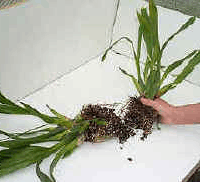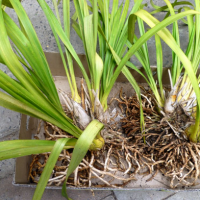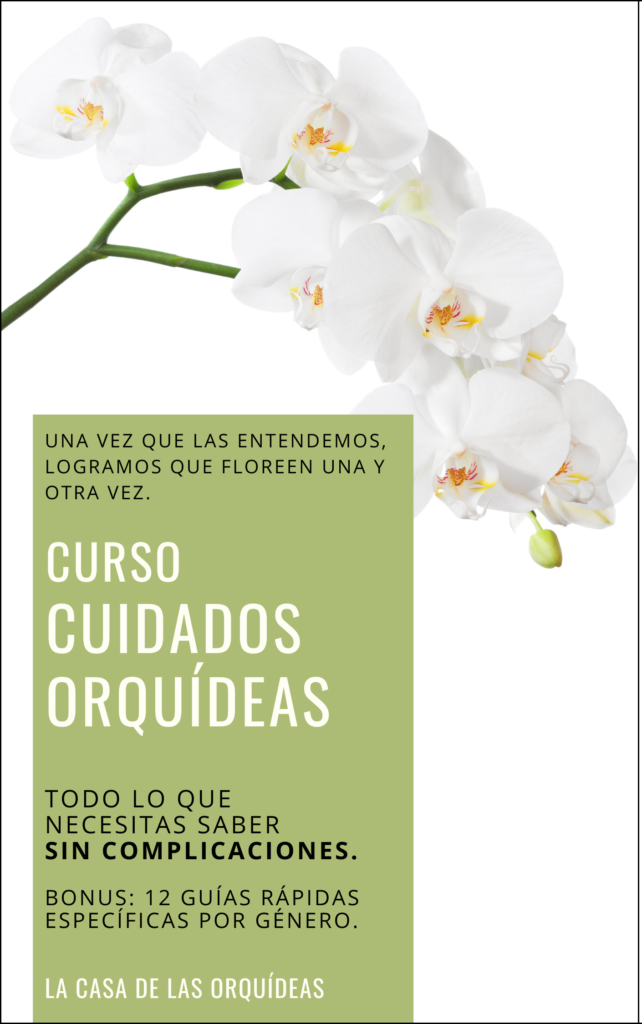+ Spanish
Orchids, specially when grown in organic media, should be repotted every 2 years in general to renew the organic media. If your media is inorganic, it won’t hurt to wash and disinfect the media while you inspect your root system.
Let’s begin by setting apart healthy orchids from sick orchids:
When your orchid is sick, you need to inspect the roots immediately! It’s preferable to risk losing the flowers, than to lose the plant if the roots are rotten or getting there, or if the crown is compromised (see “Crown Rot“); it’s important to act fast to save your plant.
Now, if your orchid is healthy, there are three indicators that will help you know it is time to repot:
1. Several roots are coming out of the pot; these roots can be new growths growing down searching for the humidity of the media, or aerial roots that will try to hydrate from the relative humidity in the air. Aerial roots have a function, even though it is a secondary function and it’s less important than that of the roots that are growing already in the media in terms of water and nutrient absorbance. However, these aerial roots need special care also. In our next article we’ll talk about them.
2. Your orchid has grown too much and has reached the diametrical border of the pot.
3. Your media is no longer draining properly, it takes longer to drain than before. It feels soggy and stays wet longer.
The best time to repot your healthy orchid:
– The best time to do so is in the Spring, when your plant is developing new growths – specially new roots – and it’s not in an active blooming period. During the Spring, the weather is ideal, the temperature is raising and the RH is higher, and this will help your plant adapt better; if you do it in the Summer, the heat can be too much and the new growths will need more water to hydrate enough. In the Fall and Winter, the cold plays an adverse role making it harder for the new growths to develop; you’ll have to provide artificial heat and increase the RH. Therefore, if it is not vital to repot, we suggest you wait until the Spring to do so.
– You should only repot a healthy orchid if it has new root growths and these new roots are already 1.5″ long, and you have at least 4 new roots. Old roots won’t always adapt to the new media and you can loose them, so it’s very important to have new roots that will help the plant absorb water and nutrients if this happens.
– When your plant has outgrown the pot: for example, a Cymbidium that has developed so many new pseudobulbs and is so big in diameter that it simply doesn’t fit in the pot anymore. If the orchid is too tight, don’t wait until the Spring, repot now if you have new roots. Here we have two options, change the entire plant to a bigger pot with new fresh media, or seize the opportunity and divide it, propagating it into several new pots. Be sure that each pseudobulb has enough roots to be able to survive! In any case, make sure to take a look at the roots and renew the media. Its complicated to work with a big orchid; be careful and try not to break the roots, specially when dividing it, because the roots are surely tangled and you need to be patient and take your time untangling them. Remove any leftover media and rinse the roots.
If you have doubts on how to repot, watch our video Repotting Into Semi Hydroponics, the first steps are the same for any growing media and it will help you figure out which roots you should cut off and which ones you should keep.
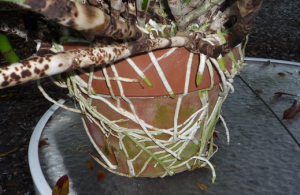 If the roots have grown so much that they are on the outside of a clay pot already attached to it, the best thing do do is to break the pot, remove all the media you can and repot, clinging clay pot pieces and all, into the new pot. These clay chunks will provide good drainage and this way you won’t hurt the roots by trying to separate them from the clay. If you try to pull them away from the clay, the velamen that covers and it’s glued to the pot will break damaging the root system and leaving these roots exposed to bacterial and fungal infections.
If the roots have grown so much that they are on the outside of a clay pot already attached to it, the best thing do do is to break the pot, remove all the media you can and repot, clinging clay pot pieces and all, into the new pot. These clay chunks will provide good drainage and this way you won’t hurt the roots by trying to separate them from the clay. If you try to pull them away from the clay, the velamen that covers and it’s glued to the pot will break damaging the root system and leaving these roots exposed to bacterial and fungal infections.
If by accident you do break some roots, be sure to cauterize them!! We recommend, even if you didn’t cut anything off, to apply our multipurpose spray to all roots as a preventive measure.
check out our store!!
(click on the image)

